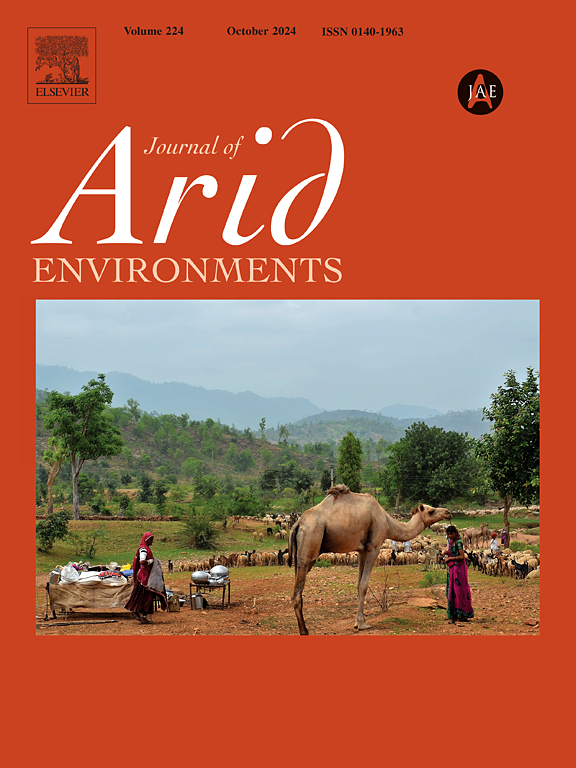Microtextural patterns as an archive of geomorphic and pedogenic response to anthropogenic humidification in an arid dune system (Morocco)
IF 2.5
3区 环境科学与生态学
Q2 ECOLOGY
引用次数: 0
Abstract
Understanding the response of arid soil-landscape systems to changes in moisture regimes is critical for assessing their stability. This study investigates the Elfeija dune field in southeastern Morocco, a site chosen for its well-preserved record of both natural climatic cycles and recent anthropogenic impacts. The process-response dynamics were investigated using quartz grain exoscopy (SEM-EDS) as a primary indicator. The analysis reveals a polyphasic history where subsequent pedogenic processes overprint primary geomorphic signatures. The initial state of the parent material is defined by a dominant suite of aeolian microtextures, including high-gloss polish and mechanical impact marks, indicative of prolonged transport in a mobile dune system. This primary surface is consistently altered by features diagnostic of incipient pedogenesis, such as chemical dissolution etching and authigenic growth of complex iron- and chlorine-rich aluminosilicate precipitates. Significantly, the recent, widespread expansion of irrigated agriculture provides a powerful modern analogue for the natural arid-humid cycles of the Quaternary.The seasonal, human-induced humidification of the sandy substrate creates the precise conditions required for these chemical alteration processes. The study concludes that the Elfeija geosite serves not only as a high-fidelity archive of past climatic shifts but also as a real-time laboratory for studying the geomorphic and pedogenic response of an arid system to modern anthropogenic forcing.
微结构模式作为干旱沙丘系统对人为加湿的地貌和成土响应档案(摩洛哥)
了解干旱土壤景观系统对湿度变化的响应对于评估其稳定性至关重要。本研究调查了摩洛哥东南部的Elfeija沙丘场,该地点因其保存完好的自然气候周期和最近的人为影响记录而被选中。以石英颗粒外相显微镜(SEM-EDS)为主要指标,研究了过程响应动力学。分析揭示了一个多相的历史,随后的成土过程覆盖了原始地貌特征。母体物质的初始状态由主要的风成微纹理定义,包括高光泽抛光和机械冲击痕迹,表明在移动沙丘系统中长期运输。早期成土作用的特征,如化学溶解蚀刻和复杂的富铁和富氯铝硅酸盐沉淀的自生生长,不断改变这一原始表面。值得注意的是,最近灌溉农业的广泛扩张为第四纪的自然干湿循环提供了强有力的现代模拟。季节性的、人为引起的沙质基质的加湿为这些化学变化过程创造了所需的精确条件。该研究认为,Elfeija地质遗址不仅可以作为过去气候变化的高保真档案,而且可以作为研究干旱系统对现代人为强迫的地貌和成土响应的实时实验室。
本文章由计算机程序翻译,如有差异,请以英文原文为准。
求助全文
约1分钟内获得全文
求助全文
来源期刊

Journal of Arid Environments
环境科学-环境科学
CiteScore
5.70
自引率
3.70%
发文量
144
审稿时长
55 days
期刊介绍:
The Journal of Arid Environments is an international journal publishing original scientific and technical research articles on physical, biological and cultural aspects of arid, semi-arid, and desert environments. As a forum of multi-disciplinary and interdisciplinary dialogue it addresses research on all aspects of arid environments and their past, present and future use.
 求助内容:
求助内容: 应助结果提醒方式:
应助结果提醒方式:


